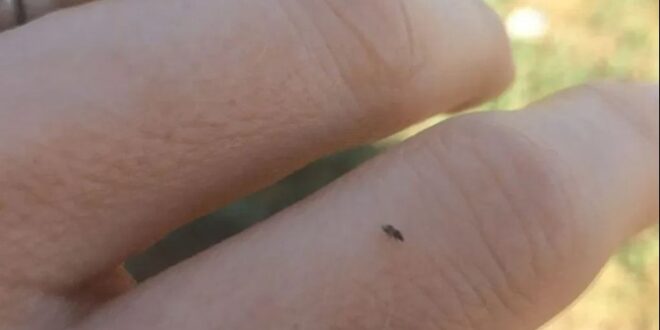Tiny black bugs that look like poppy seeds can be a common nuisance in many households. These minuscule creatures, often referred to as black beetles or black weevils, are typically found in kitchens, bathrooms, and other areas where food is present. While they may not pose any direct harm to humans, their presence can be unsettling and may indicate an underlying issue that needs to be addressed. In this article, we will explore the characteristics of these bugs, their potential sources, and effective methods for prevention and control.
Characteristics of Tiny Black Bugs
The tiny black bugs that resemble poppy seeds are often identified as black beetles or black weevils due to their appearance. Measuring only a few millimeters in length, these insects have a dark brown to black coloration and a hard exoskeleton. They have a distinct oval shape and are often mistaken for dirt or small seeds due to their size and color. These bugs are wingless and move relatively slowly, making them easy to spot when they are crawling on surfaces.
Potential Sources of Infestation
Understanding the potential sources of infestation is crucial in effectively dealing with these tiny black bugs. They are commonly found in areas where food is stored or prepared, such as kitchens, pantries, and cabinets. These bugs are attracted to organic materials, including grains, cereals, flour, and spices. Improperly sealed containers or packages can provide easy access for these insects, allowing them to infest the stored food items.
Additionally, these bugs can also be found in bathrooms, particularly near drains and pipes. Moisture and decaying organic matter can attract them, making bathroom environments suitable for their survival. Leaky pipes, standing water, or damp areas provide ideal conditions for these bugs to thrive.
Prevention and Control
Preventing an infestation of tiny black bugs is essential to maintain a clean and hygienic living environment. Here are some effective methods for prevention and control:
1. Proper Food Storage: Ensure that all food items are stored in airtight containers to prevent these bugs from accessing them. Regularly check for signs of infestation, such as tiny holes or webbing, and discard any infested items immediately.
2. Cleanliness: Regularly clean your kitchen and bathroom areas, paying close attention to cracks, crevices, and hidden corners where these bugs may hide. Vacuuming or sweeping these areas can help remove any eggs or larvae that may be present.
3. Moisture Control: Address any moisture issues in your home, especially in bathrooms and kitchen areas. Fix leaky pipes, ensure proper ventilation, and promptly dry any wet surfaces to discourage the growth of these bugs.
4. Professional Pest Control: If the infestation persists despite your efforts, it may be necessary to seek professional pest control services. Pest control experts can identify the source of the infestation and employ targeted treatments to eliminate these bugs effectively.
Conclusion
Tiny black bugs that resemble poppy seeds can be a nuisance in households, particularly in kitchens and bathrooms. While they may not pose any direct harm to humans, their presence can indicate underlying issues that need attention. By understanding their characteristics and potential sources of infestation, as well as implementing effective prevention and control methods, homeowners can successfully manage these tiny black bugs and maintain a clean living environment. Remember, consistency in cleanliness and proper food storage are key to keeping these pests at bay.
 HammBurg Be informed with latest news, reviews, entertainment, lifestyle tips, and much more.
HammBurg Be informed with latest news, reviews, entertainment, lifestyle tips, and much more.




